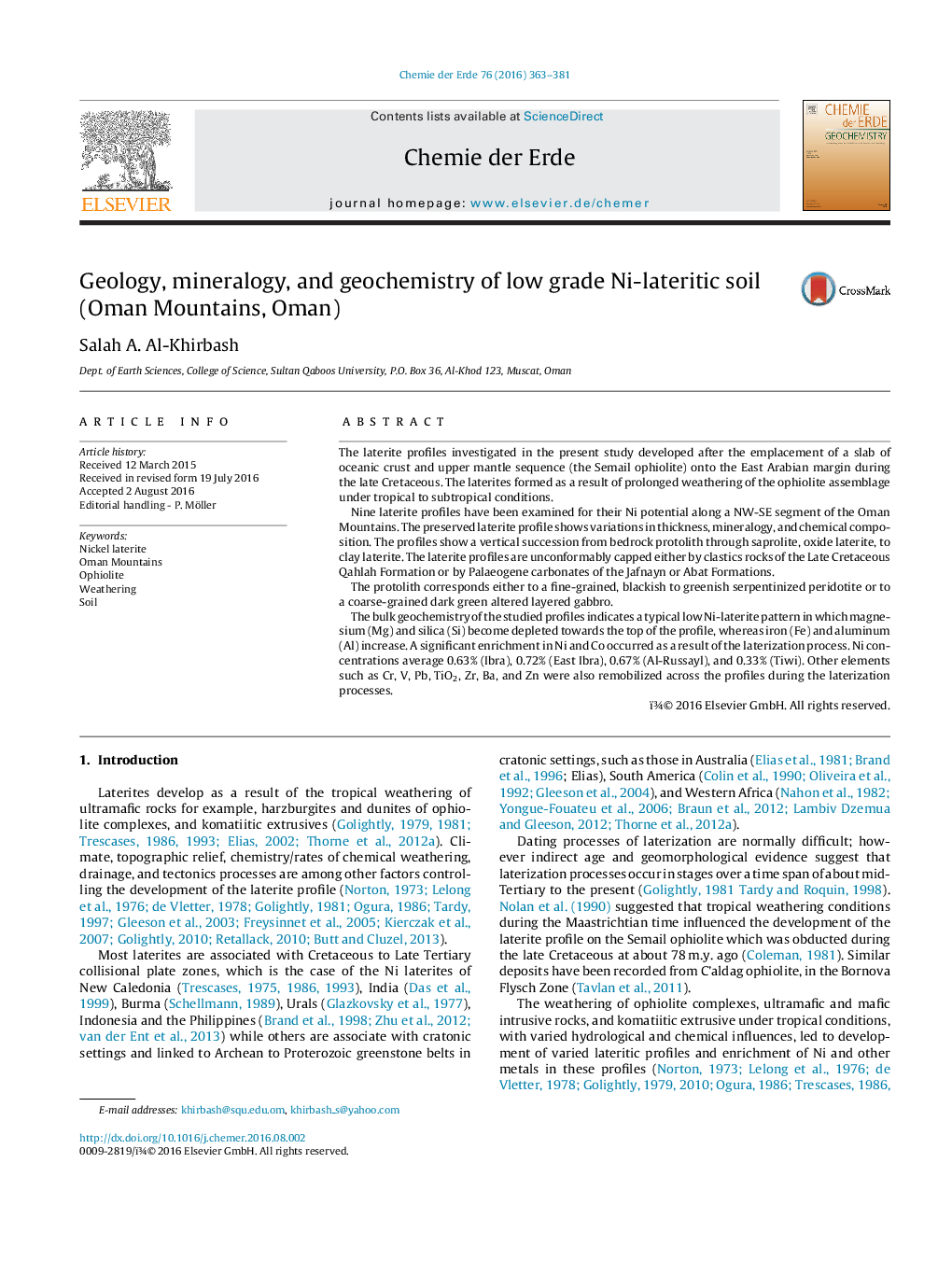| Article ID | Journal | Published Year | Pages | File Type |
|---|---|---|---|---|
| 5745691 | Chemie der Erde - Geochemistry | 2016 | 19 Pages |
The laterite profiles investigated in the present study developed after the emplacement of a slab of oceanic crust and upper mantle sequence (the Semail ophiolite) onto the East Arabian margin during the late Cretaceous. The laterites formed as a result of prolonged weathering of the ophiolite assemblage under tropical to subtropical conditions.Nine laterite profiles have been examined for their Ni potential along a NW-SE segment of the Oman Mountains. The preserved laterite profile shows variations in thickness, mineralogy, and chemical composition. The profiles show a vertical succession from bedrock protolith through saprolite, oxide laterite, to clay laterite. The laterite profiles are unconformably capped either by clastics rocks of the Late Cretaceous Qahlah Formation or by Palaeogene carbonates of the Jafnayn or Abat Formations.The protolith corresponds either to a fine-grained, blackish to greenish serpentinized peridotite or to a coarse-grained dark green altered layered gabbro.The bulk geochemistry of the studied profiles indicates a typical low Ni-laterite pattern in which magnesium (Mg) and silica (Si) become depleted towards the top of the profile, whereas iron (Fe) and aluminum (Al) increase. A significant enrichment in Ni and Co occurred as a result of the laterization process. Ni concentrations average 0.63% (Ibra), 0.72% (East Ibra), 0.67% (Al-Russayl), and 0.33% (Tiwi). Other elements such as Cr, V, Pb, TiO2, Zr, Ba, and Zn were also remobilized across the profiles during the laterization processes.
